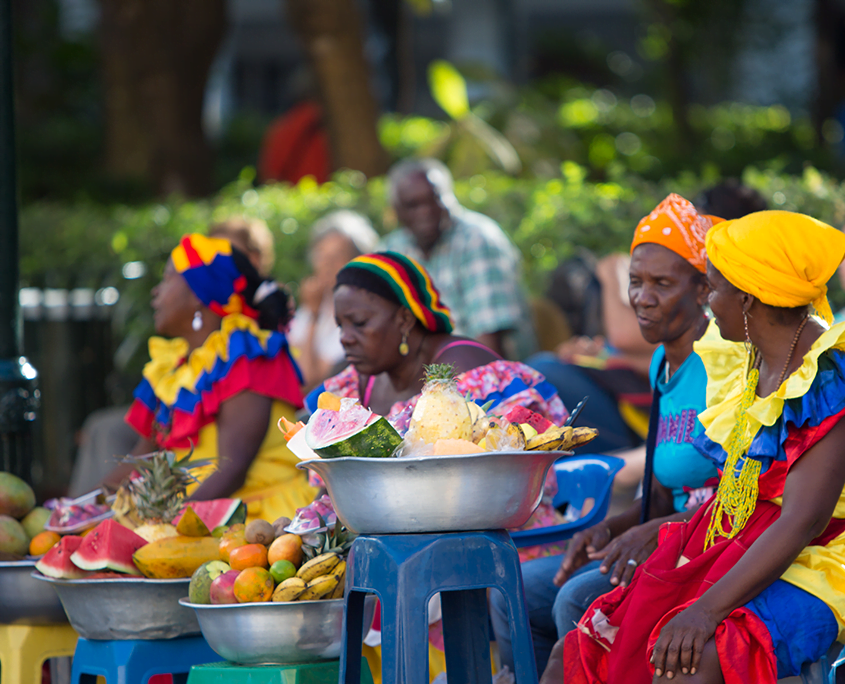Women sitting and selling fruits at the old city of Cartagena and dressed with the traditional clothes, Colombia
Photo Credit: piccaya/iStock/Getty Images
World Food Day
Growing up, I always wondered why my mother made statements like, “there is food at home, we will have yesterday’s leftovers or why won’t you just make a meal with ingredients in the house”. I can now say that I have realised the importance of these reprimands.
“How can we allow food to be thrown away when more than 820 million people in the world continue to go hungry every day?”, asked Food and Agriculture Organisation (FAO) Director-General Qu Dongyu in the foreword to his agency’s report.
We produce enough food to feed everyone, yet one in nine people go to bed hungry every night. At the same time, one-third of food produced for human consumption is lost or wasted. On this World Food Day, the World Food Programme is hoping to bring the problems surrounding food loss and waste to a larger audience with its #StopTheWaste campaign launch. This is a step taken to encourage all of us to think about how we can reduce food waste in our daily lives.
Food loss and waste have all kinds of consequences for economies, food security and the environment. Food loss is the decrease in the quantity or quality of food resulting from decisions and actions by food suppliers in the chain, excluding retailers, food service providers and consumers.
Empirically, it refers to any food that is discarded, incinerated or otherwise disposed of along the food supply chain from harvest/slaughter/catch up to, but excluding the retail level, and does not re-enter in any other productive utilisation, such as feed or seed.
Food loss, as reported by FAO in the Food Loss Index (FLI), occurs from post-harvest up to, but not including, the retail level. Food waste refers to the decrease in the quantity or quality of food resulting from decisions and actions by retailers, food service providers and consumers. Food is wasted in many ways:
- Fresh produce that deviates from what is considered optimal, for example in terms of shape, size and colour, is often removed from the supply chain during sorting operations.
- Foods that are close to, at or beyond the “best-before” date are often discarded by retailers and consumers.
- Large quantities of wholesome edible food are often unused or leftover and discarded from household kitchens and eating establishments.
The main suppliers of food in many countries of the world are small-holder farmers who make up the bulk of the food producers in poor rural areas in Africa, Asia and Latin America. In countries like Guatemala, for example, small-holder farmers represent approximately one-third of the country’s entire population. By improving their access to information and education – especially for women – and providing innovative solutions to the issues of transportation and lack of access to energy, smallholder farmers can reduce their food loss.
All of us need to make a change in our daily actions when choosing and cooking our food. For example: when you are about to throw out those two last pieces of bread because no one will eat them, you can try to make a healthy sandwich of your liking; when that banana may not look so great because it has undergone a bit of browning is on its way to the trash, you can easily cut up small pieces and have it with yoghurt or make a smoothie!
By making small changes right in our kitchens/ homes, we can not only create healthy and nutritious recipes but also reduce food waste and help eradicate hunger. Reducing food loss and waste is critical to creating a Zero Hunger world and reaching the world’s Sustainable Development Goals (SDGs), especially SDG 2 (End Hunger) and SDG 12 (Ensure sustainable consumption and production patterns). With such an important challenge, we all need to work together. We need strong political will and commitment.



